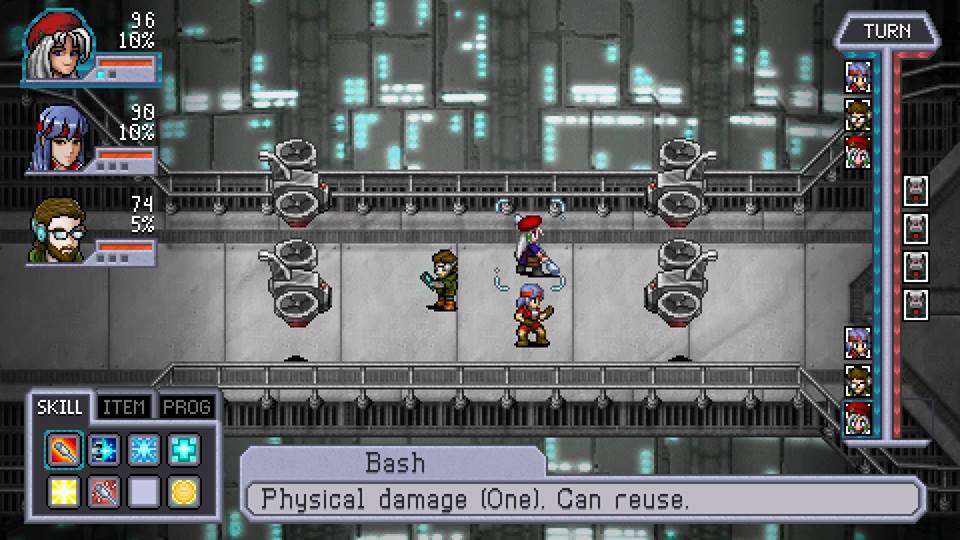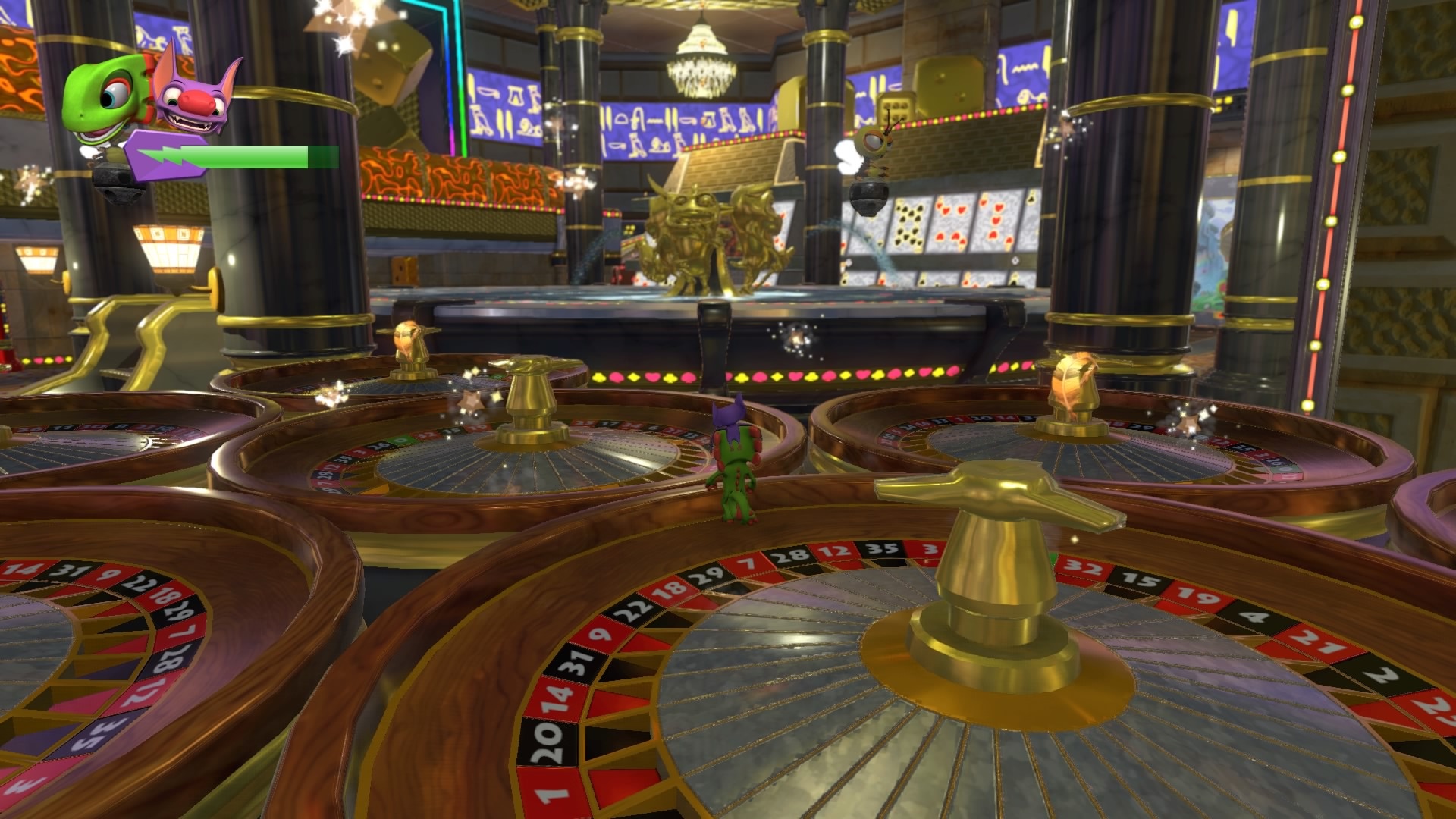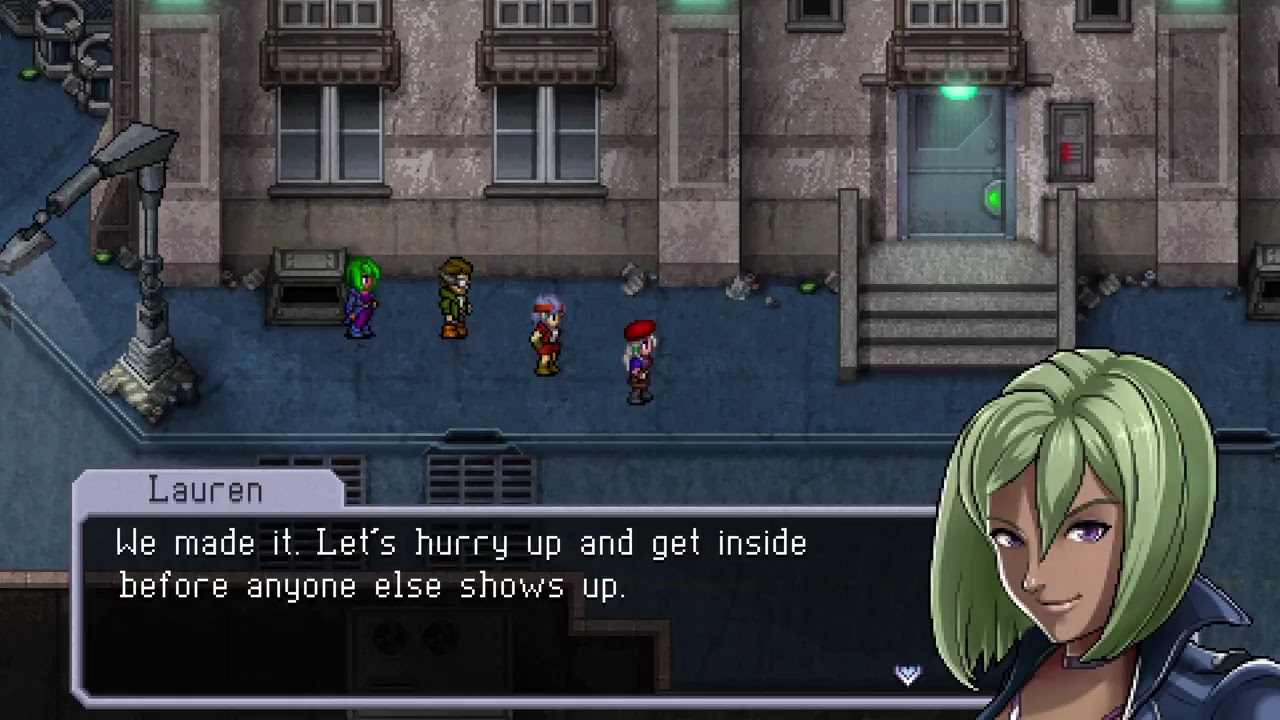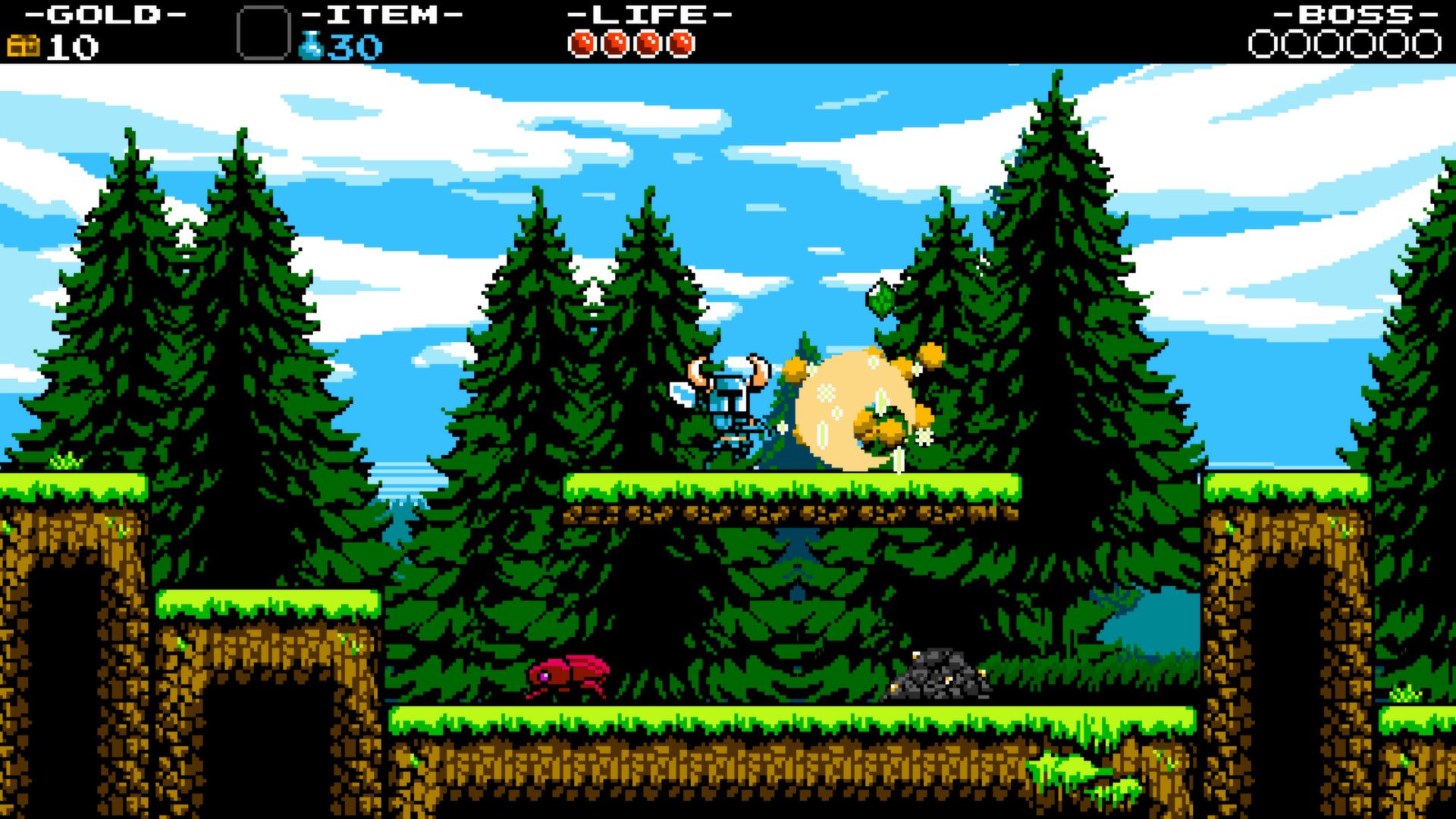Yooka-Laylee is not a very good game. Its creators, Playtonic, wrapped it (and themselves) up so firmly in nostalgia that it ended up choking them. This can’t be too surprising and not just because the Kickstarter sold itself on its similarities to Banjo-Kazooie. The people who created the lovable Nintendo 64 platformer are the same ones who brought us Yooka-Laylee after all. But this “new” game wasn’t meant to be a spiritual successor so much as it was the fourth in the series (or third, depending on your level of disdain for Nuts & Bolts).
Cosmic Star Heroine released on the same day as the aforementioned platformer. It drew so little fanfare it fell off a lot of people’s radars, including ours. It’s a 2D pixel art RPG taking inspiration from Chrono Trigger, but isn’t itself a sequel or spiritual successor. It wasn’t developed by industry titans looking to get back in the saddle or a well-known developer breaking from publishers. While it’s not a twin video game of Yooka-Laylee (having been in development for at least two years before the latter) the two do share one striking similarity. Both their Kickstarter campaigns and the games themselves are firmly rooted in nostalgia.

Recreating Banjo-Kazooie was the be all, end all for Yooka-Laylee. It’s what they pitched, it’s what everyone backed, and that’s what we got. The Kickstarter page invoked the holy name of the bear and bird no less 13 times. That doesn’t count the pitch video or all the interviews Playtonic gave shortly after launch.
It was teased that there’d be a new feature in the form of “expandable worlds.” This wasn’t elaborated on, and it turns out they just meant collecting items and spending them to open new areas of the levels like any other video game currency. Comments like that were made to appeal to more modern gamers, but it’s clear the endeavor built itself upon the promise of delivering a nostalgic experience. Playtonic pitched Yooka-Laylee and worked all through its development with a Nintendo 64 strapped to their backs, and it shows.
Stepping Out From The Shadows Of Your Heroes
Zeboyd took a different approach. Chrono Trigger and Final Fantasy are mentioned, but only about three times each, and mostly when the developers were listing their favorite games. The front page description reads “Inspired by Chrono Trigger, Phantasy Star & Suikoden,” and that’s the extent of the nostalgia-baiting. For the rest of their pitch, Zeboyd relies on the merits of their game and their past success to curry favor and convince anyone passing by to throw in a few dollars. That’s because CSH was never intended to be a recreation of those old games. They’re a source of inspiration, as stated in the Kickstarter description. Zeboyd set their sights on something higher than remaking an old game, they wanted to create their own.

Where the former adheres to the 3D platforming bible as if game design hasn’t evolved over the last 15 years, the latter thrives on changing things up. Cosmic Star Heroine is hardly a bastion of radical ideas, but it does more to innovate in its first ten minutes than Playtonic’s mess does in its entire run time. Yooka-Laylee steals every idea it has from Rare’s old library – the game show quizzes, the open level design, the leading buddy duo, the minecart levels, etc. It even borrows it’s dopey, double-hyphenated logo.
Cosmic Star Heroine mixes things up almost from the start with its combat system. Rather than the standard suite of weapon attacks, defensive abilites, and spells, you can instead use whatever attacks you want from the get-go. Most of them are a one-time use though, until you go into defensive mode where it recharges. The game takes it one step further though and introduces the “Hyper” meter. This slowly fills up in combat and once filled, unleashes a powerful attack, but only if you haven’t expelled your attack move the previous turn. It doesn’t sound like much, but it adds a huge layer of depth and strategy to what could have been another standard combat system.
Can’t Buy Love
It’s ironic that a 2D pixel art RPG in a sea full of such games feels fresher than the first 3D platformer in years with about twenty times as much money. It goes to show that neither money nor the latest graphics can buy creativity. It can’t hold back father time, either.

The principle members of Platyonic – directors Chris Sutherland and Gavin Price, and head artist Steve Mayles – were all at Rare in the studio’s heydays. That would be the Nintendo 64 era, when Rare released Killer Instinct Gold in 1996, up to Conker’s Bad Fur Day in 2000. Depending on who you ask (a 24 year old, in this case) that was a long time ago. Since then, all three men worked on only a handful of mediocre titles while still at Rare. Their notable credits from 2001 onwards consist of disappointing attempts at reclaiming old glory such as Star Fox Adventures, Grabbed by the Ghoulies, and Banjo Kazooie: Nuts & Bolts. After that latest disappointment, Microsoft (who purchased the studio in 2002) relegated them to the likes of Kinect Sports.
Microsoft became the boogey-man for all of Rare’s failures after the purchase. You could see how that association became so. Microsoft is notorious for losing interest in anything that isn’t Halo or Gears of War, and the quality of Rare’s games plummeted immediately after the purchase. Relegating what was once one of the most popular studios in the world to a Kinect exclusive sports title (after the hardware’s failure was already evident) was the final nail in the coffin for many fans. It would seem Rare’s employees saw the writing on the wall as well, as many left to form Playtonic shortly after Kinect Sports’ release.
Looking Back With New Eyes
When you start to pull away that shiny veneer on the surface, you get a complicated picture. The biggest still unanswered question from the time is why Nintendo was willing to let such a successful studio go in the first place. Rare co-founder Tim Stamper says he wanted to sell the studio to Nintendo, but they weren’t interested. And what about Rare’s games from around the time of the Microsoft purchase? Their last Nintendo game, Star Fox Adventures, flopped. It had nothing to do with Star Fox, and lacked the polish and charm of the company’s previous titles. Grabbed by the Ghoulies, their first game with Microsoft, was another disappointment, once again feeling like a factory churned out product. That was followed by the equally mediocre Kameo: Elements of Power and the outright disaster of Perfect Dark Zero.
However much Microsoft hurt Rare, it could be time for fans to admit that the studio was already past its prime. Perhaps that’s what Yooka-Laylee is to Playtonic – less an attempt at bringing back a beloved genre and more a shot at recapturing their spark from the late 90’s.

Zeboyd Games was a young studio when they took to Kickstarter in 2013. Their first game was the visual novel, Epiphany in Spaaace!, released in 2009. They’re best known for their 2D RPG’s, the first of which was 2010’s Breath of Death VII. Created by Robert Boyd with William Stiernberg, this new studio was a breath of fresh air. Even though they used basic 2D pixel art, they innovated in other areas. Much the same way Cosmic Star Heroine sells itself on fast-paced combat, so too did their first game. From the very beginning, Boyd and Stiernberg showed a desire to break from the norm, and try new things. Their first two RPG’s, including the also Kickstartered, Cthulhu Saves the World, were both comedy games, using an outer shell of nostalgia to facilitate their criticisms and jokes.
Fresh Takes From Fresh Faces
It had the kind of parodying and even self-aggrandizing humor that you’d only really get from new blood like Zeboyd. When Yooka-Laylee makes another game the butt of its joke, it sounds like bitter old men telling a new generation of indies to get off their lawn. Zeboyd’s work, on the other hand, always shared the double-edged sword of appreciation and apprehension. They saw the good in old games such as Chrono Trigger and Suikoden II, but also recognized their flaws. That’s because when they experienced those games, they were outside observers. The folks at Playtonic were directly responsible for making the games that put people in a nostalgic state of mind to begin with. In other words, Zeboyd is able to take off their rose-tinted glasses in a way Playtonic never can.

When it comes to older developers making the pilgrimage to crowdfunding in the hopes of rekindling their old spark, the aftermath is heartbreaking. Whether it be Tim Schafer’s Broken Age, Keiji Inafune’s Mighty No. 9 and Red Ash, or Al Lowe’s Leisure Suit Larry: Reloaded, it’s not hard to see why Kickstarter has been suffering for the last year. Those who take inspiration from the games of yesteryear instead of trying to reproduce them have a better track record. Yacht Club Games’ Shovel Knight and now Cosmic Star Heroine are the best examples. There’s also Undertale which is better than any Mother game and Kentucky Route Zero which may have revolutionized the point-and-click.
Betting On A Known Commodity
There’s an obvious parallel between those two groups, however. Each one of those older developers raised more money than those new creators combined. Despite the higher quality of the newbies products. Tying yourself to nostalgia is no way to develop a game, but it’s a great way of earning money. You can’t argue that those experienced veterans are more reliable. Crowdfunding is an entirely new field to many of them. Experience didn’t convince Inafune not to launch the Red Ash campaign, or make Yu Suzuki disclose Shenmue III‘s backing from Sony and Sega.
Cosmic Star Heroine and Yooka-Laylee, like so many before them, serve as an example. Nostalgia can make a good starting point, but it shouldn’t be the destination. It doesn’t matter if you’re an experienced developer trying something new, or a newbie trying something old, it will almost always turn out the same way. Innovation is risky, but that’s what crowdfunding is for. At the very least, it has a higher success rate than nostalgia driven remakes, spiritual successors, and sequels to decades old games. Hopefully Playtonic’s future plans for Chestnut’s Dreadful Hair Week and Flawless Nighttime will evaporate in favor of something a little less nostalgic.




[…] content to just rely on nostalgia, Matsuura-san and Yano-san began exploring ways to push the genre into new directions. They […]